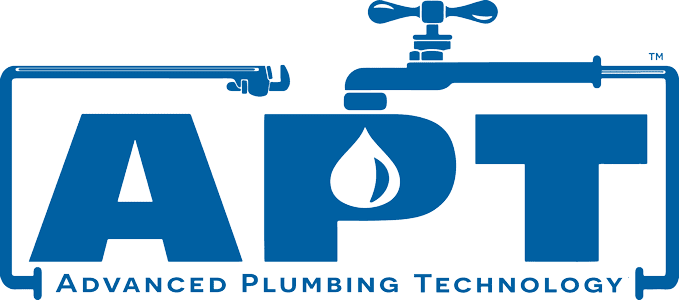Innovations in Pipe Repair: Trenchless Technology Explained
September 24th, 2023Posted by Brian Shoemaker
Welcome to Advanced Plumbing Technology’s comprehensive guide on the revolutionary innovations in pipe repair – the remarkable world of trenchless technology. In this detailed article, we delve into the depths of this groundbreaking technique that is reshaping the plumbing industry. From its inception to its modern-day applications, we’ll uncover the inner workings of trenchless technology, its benefits, and how it’s changing the way we approach pipe repair. Let’s embark on this enlightening journey together.
Understanding Trenchless Technology
Trenchless technology is a game-changer in the field of pipe repair, eliminating the need for disruptive and costly excavation. It’s a suite of advanced methods designed to repair, rehabilitate, or replace underground pipelines with minimal surface disruption. This innovation has paved the way for a more efficient, eco-friendly, and cost-effective approach to addressing pipe issues.
The Evolution of Trenchless Technology
The origins of trenchless technology can be traced back to the 1970s when the first trenchless methods were introduced. These methods aimed to reduce the environmental impact of traditional open-cut excavations. Over the decades, continuous research and development have led to the refinement and expansion of trenchless techniques, resulting in a diverse array of methods that cater to various pipe repair needs.
Key Trenchless Techniques
Pipe Lining
Pipe lining, also known as cured-in-place pipe (CIPP) lining, involves inserting a flexible liner coated with resin into the damaged pipe. The liner is then cured in place, creating a seamless and durable inner layer that restores the pipe’s structural integrity. This method is ideal for repairing small cracks, leaks, and corrosion without the need for excavation.
Pipe Bursting
Pipe bursting is employed when a pipe is severely damaged and needs complete replacement. A new pipe is simultaneously pulled through the old, damaged one, breaking apart the old pipe as the new one takes its place. This method is particularly useful for replacing deteriorated or undersized pipes with minimal disruption to the surrounding area.
Directional Drilling
Directional drilling, also known as horizontal directional drilling (HDD), is used to install new pipelines without the need for open trenches. A drilling rig creates a small pilot hole along a predetermined path, and the new pipe is installed as the drill string is removed. HDD is especially valuable for crossing obstacles like rivers, highways, and congested urban areas.
Slip Lining
Slip lining involves inserting a new, smaller-diameter pipe into the existing damaged pipe. This technique is effective for restoring the hydraulic capacity of the pipe, reducing leaks, and preventing further deterioration. Slip lining is a cost-effective method suitable for pipes with minimal structural damage.
Advantages of Trenchless Technology
Trenchless technology offers a multitude of benefits that have revolutionized the pipe repair industry:
- Minimal Disruption: Trenchless methods significantly reduce disruption to the surrounding environment, infrastructure, and landscaping. This translates to less inconvenience for property owners and the community at large.
- Faster Repairs: Traditional excavation methods can take days or even weeks to complete. Trenchless repairs are faster, often completed within a matter of hours, minimizing downtime and inconvenience.
- Cost Savings: While initial costs may be slightly higher than traditional methods, the long-term cost savings from reduced labor, restoration, and environmental impact make trenchless technology a cost-effective choice.
- Environmental Preservation: Trenchless techniques are environmentally friendly as they minimize soil disturbance, reduce the need for heavy machinery, and lower the overall carbon footprint of the repair process.
- Versatility: With various trenchless methods available, technicians can choose the most suitable technique for each unique pipe repair scenario.
Applications of Trenchless Technology
Trenchless technology has found applications across a wide range of industries and scenarios:
- Municipal Infrastructure: Trenchless methods are extensively used to repair and replace water and sewer pipelines in urban areas without causing disruption to traffic and daily life.
- Industrial Pipelines: Trenchless techniques are employed in industries such as oil and gas, where underground pipelines require repair or replacement.
- Residential Plumbing: Homeowners benefit from trenchless repairs that preserve their landscaping and reduce the inconvenience of open excavation.
- Environmental Remediation: Trenchless technology aids in rehabilitating pipelines in environmentally sensitive areas, minimizing disturbance to ecosystems.
The Future of Trenchless Technology
As technology continues to advance, the potential for trenchless methods continues to expand. Robotics, advanced materials, and digital monitoring are likely to play key roles in shaping the future of pipe repair. These innovations will further enhance the efficiency, accuracy, and sustainability of trenchless techniques.
Conclusion
In conclusion, trenchless technology has redefined the landscape of pipe repair, offering a host of benefits that traditional excavation methods simply cannot match. From its humble beginnings to its current state-of-the-art applications, this innovative approach has demonstrated its value across industries and scenarios.
